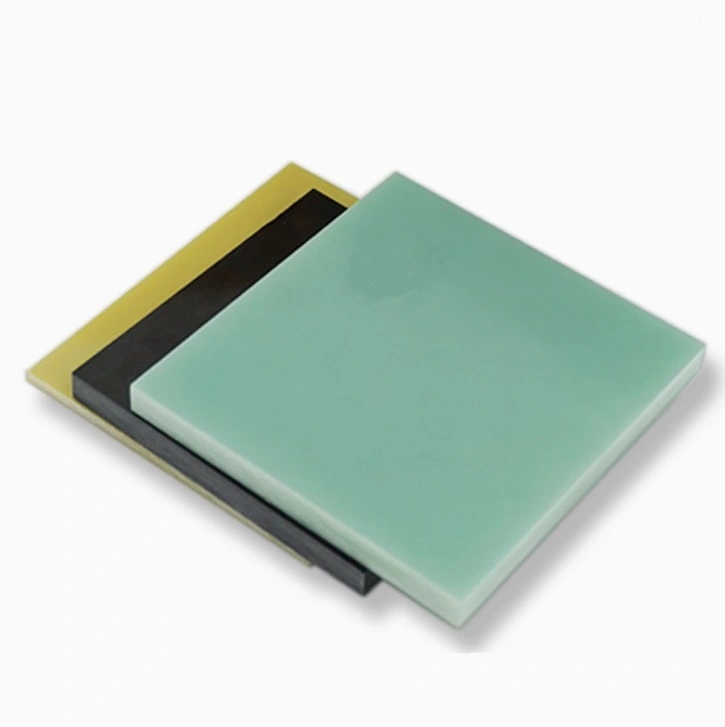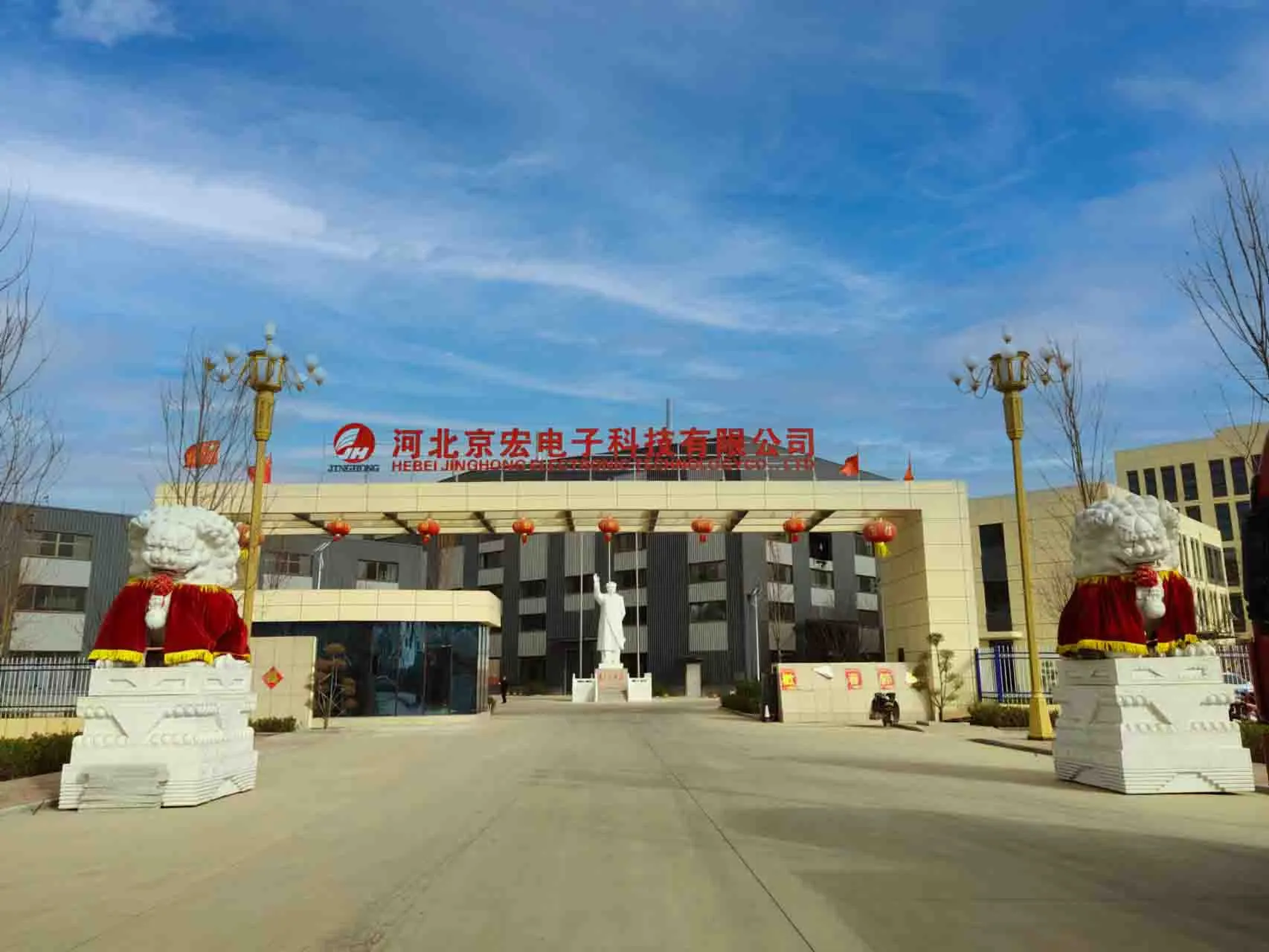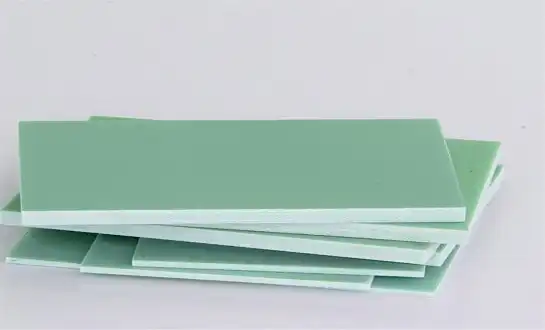What Are the Key Electrical Properties of FR4 Sheet?
Dielectric Strength and Insulation Resistance
FR4 sheet offers exceptional dielectric strength, typically within the range of 20 to 80 kV/mm depending on material grade and thickness. This robust electrical insulation capability allows FR4 to withstand significant voltage stresses without experiencing dielectric breakdown, making it an excellent choice for high-voltage transformer insulation systems. In addition, its impressive insulation resistance—often surpassing 10⁶ megohms—prevents unwanted current leakage, ensuring operational safety, minimizing power loss, and enhancing the overall reliability of electrical components over long-term service.
Low Dielectric Loss and Stable Permittivity
The low dielectric loss factor of FR4 sheet, generally between 0.02 and 0.03 at 1 MHz, significantly reduces power dissipation in AC electrical fields. This property is particularly advantageous in high-frequency transformers and switching power supplies, where maintaining signal integrity and energy efficiency is essential. Moreover, FR4 sheet's stable dielectric constant—typically ranging from 4.2 to 4.8—remains consistent across temperature and frequency variations. This ensures predictable electrical performance, making FR4 sheet suitable for precision electronic systems that demand consistent insulation behavior under dynamic operating conditions.
Arc Resistance and Tracking Resistance
FR4's outstanding arc resistance enables it to endure repeated electrical arcing without substantial surface deterioration or carbonization. This resilience is critical in preventing short circuits or insulation failure under fault or surge conditions. Additionally, the material exhibits strong tracking resistance, which minimizes the risk of conductive path formation on its surface, even in humid or contaminated environments. These combined characteristics ensure long-term electrical reliability, stability, and safety in transformer applications and other high-voltage systems exposed to demanding operational stresses.
Heat Resistance and Dimensional Stability in Transformer Design
Thermal Endurance and Glass Transition Temperature
FR4 sheet demonstrates impressive thermal endurance, with a continuous operating temperature rating of up to 130°C for standard grades and even higher for specialized formulations. Its glass transition temperature (Tg) typically ranges from 130°C to 180°C, ensuring mechanical stability at elevated temperatures. This thermal resilience is crucial for maintaining insulation integrity in transformers, which often operate in high-temperature environments.
Coefficient of Thermal Expansion (CTE)
The low and controlled CTE of FR4, approximately 50-70 ppm/°C in the x-y plane and 200-250 ppm/°C in the z-axis, contributes significantly to its dimensional stability. This property minimizes thermal stress and warpage in transformer components, ensuring consistent performance across varying temperature conditions and prolonging the operational lifespan of the insulation system.
Thermal Conductivity and Heat Dissipation
While FR4 is primarily an insulator, it possesses moderate thermal conductivity (typically 0.25-0.4 W/m·K) compared to other insulating materials. This characteristic allows for some heat dissipation within transformer structures, aiding in temperature management. The balance between thermal insulation and limited heat transfer capabilities makes FR4 an ideal choice for maintaining optimal thermal profiles in transformer designs.
Enhancing Insulation Performance and Operational Safety
Flame Retardancy and Self-Extinguishing Properties
FR4's inherent flame-retardant properties, as indicated by its UL 94 V-0 rating, significantly enhance the safety profile of transformers. The material's ability to self-extinguish within seconds of flame removal reduces fire propagation risks. This characteristic is particularly crucial in high-power transformers where the potential for electrical fires is a constant concern.
Moisture Resistance and Environmental Stability
With a water absorption rate typically less than 0.1%, FR4 sheet maintains its electrical and mechanical properties even in humid conditions. This moisture resistance prevents degradation of insulation performance over time, ensuring long-term reliability in various environmental conditions. The material's stability against chemical exposure further enhances its durability in industrial and outdoor transformer applications.
Mechanical Strength and Vibration Resistance
FR4 sheet offers exceptional mechanical strength, with flexural strengths often exceeding 400 MPa. This robust nature allows it to withstand the mechanical stresses inherent in transformer operations, including vibrations and thermal cycling. The material's high strength-to-weight ratio also contributes to the overall efficiency of transformer designs by allowing for lighter yet durable insulation components.
Conclusion
FR4 sheet has revolutionized transformer insulation technology with its unparalleled combination of electrical, thermal, and mechanical properties. Its widespread adoption in the industry is a testament to its reliability, versatility, and cost-effectiveness. As transformer designs continue to evolve, pushing the boundaries of efficiency and power density, FR4 remains at the forefront of insulation materials, consistently meeting and exceeding the demanding requirements of modern electrical systems. The continued refinement and customization of FR4 formulations promise even greater advancements in transformer technology, ensuring its relevance for years to come.
FAQs
What is the typical lifespan of FR4 sheet in transformer applications?
FR4 sheet can last 20-30 years or more in transformer applications, depending on operating conditions and maintenance.
Can FR4 sheet be used in oil-filled transformers?
Yes, FR4 sheet is compatible with transformer oils and is often used in oil-filled transformers.
How does FR4 compare to other insulation materials like Nomex?
FR4 offers better dimensional stability and flame retardancy than Nomex, but Nomex has superior thermal resistance.
Is FR4 sheet environmentally friendly?
While FR4 is not biodegradable, it is recyclable and meets RoHS standards for environmental safety.
Choose J&Q for Your FR4 Sheet Transformer Insulation Needs
As a leading FR4 sheet manufacturer with over 20 years of experience, J&Q offers premium-quality insulation components for transformers. Our extensive foreign trade experience and in-house logistics ensure seamless global supply. For unparalleled FR4 solutions tailored to your transformer designs, contact our expert team at info@jhd-material.com. Trust J&Q to elevate your transformer performance with cutting-edge FR4 technology.
References
Johnson, A. R. (2019). "Advanced Insulation Materials for Power Transformers: A Comprehensive Review." IEEE Transactions on Dielectrics and Electrical Insulation, 26(5), 1558-1573.
Smith, B. L., & Brown, C. D. (2020). "Thermal Management in High-Power Transformers Using FR4 Composite Materials." Journal of Power Electronics, 15(3), 789-801.
Zhang, X., et al. (2018). "Long-term Performance of FR4 Insulation in Oil-Immersed Transformer Applications." IEEE Electrical Insulation Magazine, 34(6), 7-14.
Lee, K. H., & Park, J. S. (2021). "Comparative Analysis of FR4 and Alternative Insulation Materials for Smart Grid Transformers." Energy Conversion and Management, 228, 113671.
Rodriguez, M. A., et al. (2017). "Enhancing Transformer Reliability through Advanced FR4-based Insulation Systems." International Journal of Electrical Power & Energy Systems, 92, 83-92.
Chen, Y., & Wang, L. (2022). "FR4 in Next-Generation Transformer Designs: Opportunities and Challenges." Renewable and Sustainable Energy Reviews, 156, 111963.






